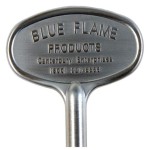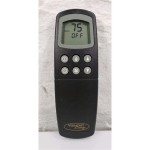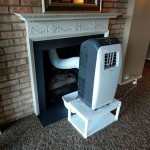Fireplace Fans and Blowers: Achieving Quiet Operation
Fireplace fans and blowers are increasingly common additions to homes with fireplaces. These devices enhance the efficiency of a fireplace by circulating warm air into the room, improving heat distribution and reducing energy costs. However, a primary concern for many homeowners is noise. A noisy fan or blower can detract from the ambiance of a crackling fire, turning a relaxing experience into an irritating one. This article explores the key aspects of fireplace fans and blowers, with a focus on achieving quiet operation.
A fireplace fan or blower typically works by drawing cool air from the room, passing it across the heated firebox, and then blowing the warmed air back into the room. This forced convection process significantly improves the fireplace's heating capability compared to relying solely on radiant heat. The effectiveness of a fireplace is often limited by its ability to distribute heat evenly. Without assistance, much of the heat generated escapes up the chimney, resulting in wasted energy. A fan or blower addresses this issue by capturing and redirecting the heat, leading to a more comfortable and energy-efficient home.
Selecting a fireplace fan or blower involves several considerations, including the size and type of fireplace, the desired airflow, and, crucially, the noise level. Understanding the sources of noise and the factors that contribute to quiet operation is essential for making an informed purchase.
Understanding the Sources of Noise in Fireplace Fans and Blowers
Noise generated by a fireplace fan or blower can stem from various sources. Identifying these sources is the first step towards mitigating unwanted noise. One of the most common culprits is the motor. Cheaper motors often use lower-quality components and less refined designs, resulting in increased vibration and noise. The type of bearings used in the motor also plays a significant role; ball bearings tend to be quieter and more durable than sleeve bearings. Another source of noise is the fan blade design. Blades that are imbalanced, poorly shaped, or made of thin material can create turbulence and aerodynamic noise. The speed at which the fan operates also directly affects the noise level; higher speeds generally produce more noise.
Vibrations from the motor and fan blades can be amplified if the unit is not properly mounted or if there are loose components. The housing of the fan or blower can also contribute to noise. If the housing is thin or poorly constructed, it can vibrate and resonate, amplifying the noise produced by the internal components. Furthermore, the interaction between the airflow and the unit's internal structures can generate noise. Sharp edges, narrow passages, and obstructions in the airflow path can create turbulence and increase noise levels. Even the grill or vent through which the air is expelled can contribute to noise if it is not designed to minimize airflow resistance.
Finally, the installation environment can influence the perceived noise level. If the fan or blower is installed in a confined space or against a reflective surface, the sound can be amplified. Understanding these various noise sources is crucial for selecting a quieter unit and implementing strategies to minimize noise during installation and operation.
Key Features to Look for in Quiet Fireplace Fans and Blowers
When shopping for a fireplace fan or blower with quiet operation in mind, several key features should be considered. The motor is arguably the most critical component. Look for units that use high-quality, brushless DC motors. Brushless DC motors are known for their smooth operation, efficiency, and low noise levels. They typically utilize ball bearings, which further contribute to quieter operation and longer lifespans. A motor with a variable speed control is also desirable. This allows you to adjust the airflow and noise level to suit your needs. Operating the fan at a lower speed can significantly reduce noise without sacrificing too much heating performance.
The fan blade design is another important factor. Opt for units with blades that are aerodynamically optimized to minimize turbulence. Look for blades that are made of a rigid, well-balanced material. Plastic blades can be prone to vibration, while metal blades can be noisy if they are not properly shaped or balanced. The housing of the fan or blower should be constructed from a thick, dense material to dampen vibrations and reduce noise transmission. Look for units with rubber or foam insulation around the motor and fan assembly. This can further reduce vibration and noise levels.
Consider models with a noise rating. Some manufacturers provide a decibel (dB) rating for their fans and blowers. Lower dB ratings indicate quieter operation. It is important to note that noise ratings can vary depending on the measurement conditions, so it's best to compare ratings from different manufacturers with caution. Read customer reviews and look for feedback on the noise levels of different models. Real-world experiences can provide valuable insights into the actual noise performance of a fan or blower. Finally, consider professional installation. Proper installation can significantly reduce noise by ensuring that the unit is securely mounted and that any potential vibrations are isolated.
Installation and Maintenance Tips for Minimizing Noise
Even a high-quality, quiet fireplace fan or blower can become noisy if it is not installed and maintained properly. Following proper installation procedures is crucial for minimizing noise. Ensure that the unit is securely mounted to the fireplace or firebox. Loose mounting hardware can allow vibrations to amplify and create unwanted noise. Use rubber or foam pads between the unit and the mounting surface to dampen vibrations. Check the airflow path for any obstructions that could create turbulence and increase noise levels. Ensure that the unit is properly aligned and that the fan blades are not rubbing against any part of the housing.
Regular maintenance is also essential for keeping the fan or blower running quietly. Clean the fan blades and motor regularly to remove dust and debris. Dust buildup can cause the fan to become unbalanced and increase noise levels. Lubricate the motor bearings periodically, following the manufacturer's recommendations. Proper lubrication can reduce friction and noise, extending the life of the motor. Inspect the unit regularly for loose screws, bolts, or other hardware. Tighten any loose components to prevent vibrations and rattles. If you notice any unusual noises, such as squealing, grinding, or rattling, investigate the cause and address it promptly. Ignoring these noises can lead to more serious problems and increased noise levels.
Consider using a speed controller to adjust the fan speed. Operating the fan at a lower speed can significantly reduce noise, especially during times when maximum heat output is not required. If the fan is installed in a confined space, consider adding some sound-absorbing material to the surrounding area. Acoustic panels or foam can help to dampen any reflected sound and reduce the overall noise level. For existing installations that are already noisy, evaluate potential retrofits or modifications. Replacing the fan blades with a quieter design, adding insulation to the housing, or improving the mounting system can all help to reduce noise levels.
By carefully considering these installation and maintenance tips, homeowners can ensure that their fireplace fan or blower operates quietly and efficiently, enhancing the enjoyment of their fireplace without the distraction of unwanted noise.

Best China Manufacture Quality Quiet Air Conditioning Fan Montigo Fireplace Centrifugal Blower With Heater Cross Flow Tangential Made In Com

Noisy Gas Fireplace Blower Here S How To Replace It Diy

Factory Direct S Tangential Manufacturers Gas Fireplace Blower For Drying Machinery China Ac Blowers Made In Com

Ac Infinity Airblaze S10 Universal Fireplace Blower Fan Kit 10 With Sd Controller Compatible Lennox Hearth Glo Majestic Rotom Fireplaces For Home Living Room Heat Circulation Com

Fireplace Blower Fan Kit Quiet For Astria Lennox Superior Rotom Gas

7 Blade Heat Powered Stove Fan Log Wood Burner Eco Friendly Quiet Heater Home Mini Fireplace Efficient Distribution Fruugo Es

Fireplace Blowers Explained How Fans Work Regency

Wood Stove Fan 4 Blades Silent Fireplace Fixed On Pipe For Gas Pellet With 2 Magnets And 1 Spare Ring Fruugo Bh

Ac Infinity Airblaze S10 Universal Fireplace Blower Fan Kit 10 With Sd Controller Compatible Lennox Hearth Glo Majestic Rotom Fireplaces For Home Living Room Heat Circulation Com

Why Do I Need A Blower Fan On My Fireplace We Love Fire
Related Posts








